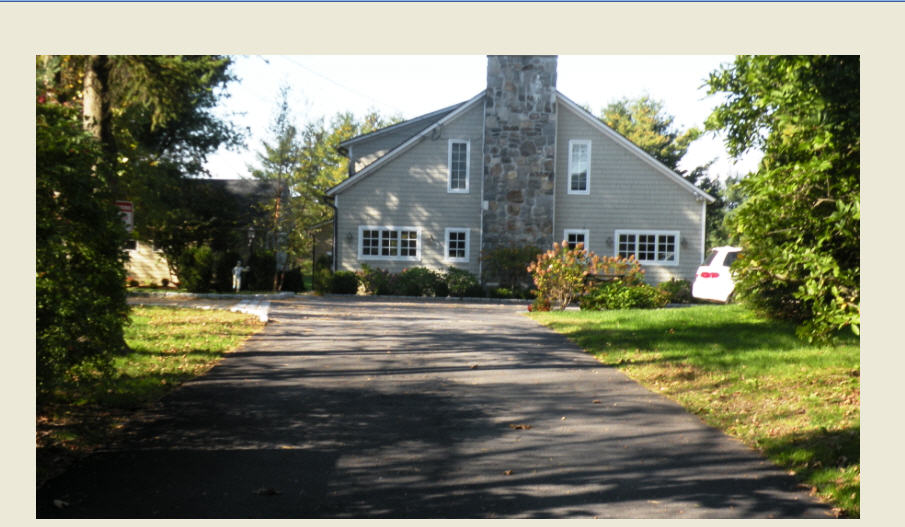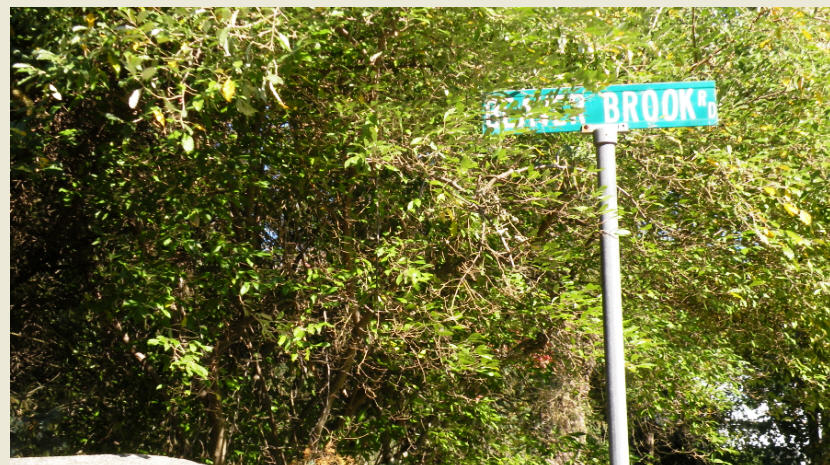博文
住地附近Ridgebury Town有座1790年的住宅建筑
|||
住地附近Ridgebury Town有座1790年的住宅建筑
黄安年文 黄安年的博客/2011年10月17日(美东时间)发布
今天上午天气晴朗, 10:30AM, 我由我们社区所在的Danbury City Briar Ridge Road穿越被BI公司和我们社区割断“林荫小道”, 10:45左右来到属于Ridgebury Town的Briar Ridge Road, 走过一段禁猎林地, 到了Beaver Brook Road和Briar Ridge Road交界的一栋位于Briar Ridge Road 39号的古老住宅, 走近一看,原来始建于1790年,酸来起劲已经有330年了。这栋建筑几经翻修保存完好, 毕竟自那时起这里没有受到战火侵袭,具备安居乐业的基本条件。
有意思的是10月1日有报道说一架小型飞机坠毁在这家驻扎的草地上, 与这家业主有何关系不可得知, 幸好没有损毁这座历史建筑。
照片 张是即时拍摄的。
*****************************
Ridgebury THistoryMain Street, looking south, 1875
Ridgefield was first settled by English colonists from Norwalk and Milford in 1708, when a group of settlers purchased land from Chief Catoonah (also known as Chief Katonah) of the Ramapo tribe. The town was incorporated under a royal charter issued in 1709. The most notable 18th century event was the Battle of Ridgefield on April 27, 1777. This American Revolutionary War skirmish involved a small colonial militia force (state militia and some Continental Army soldiers), led by, among others, General David Wooster, who died in the engagement, and Benedict Arnold,[2] whose horse was shot from under him. They faced a larger British force that had landed at Norwalk and was returning from a raid on the colonial supply depot in Danbury. The battle was a tactical victory for the British but a strategic one for the Colonials since the British never again attempted a landing by ship to attack colonial strongholds during the war.[citation needed] Today, the dead from both sides are buried together in a small cemetery on Main Street on the right of the entrance to Casagmo condominiums: "...foes in arms, brothers in death..." The Keeler Tavern, a local inn and museum, features a British cannonball still lodged in the side of the building. There are many other landmarks from the Revolutionary War in the town, with most along Main Street.
In the summer of 1781, the French army under the Comte de Rochambeau marched through Connecticut, encamping in the Ridgebury section of town, where the first Catholic mass in Ridgefield was offered. (The town of Lebanon is where the first Catholic mass was offered in the state.)
For much of its three centuries, Ridgefield was a farming community. Among the important families in the 19th century were the Rockwells and Lounsburys, which intermarried. They produced two Connecticut governors, George Lounsbury and Phineas Lounsbury. The Ridgefield Veterans Memorial Community Center on Main Street, also called the Lounsbury House, was built by Gov. Phineas Chapman Lounsbury around 1896 as his primary residence. The Lounsbury Farm near the Florida section of Ridgefield is one of the only remaining operational farms in Ridgefield.
In the late 19th century, spurred by the new railroad connection to its lofty village and the fact that nearby countryside reaches 1,000 feet (300 m) above sea level, Ridgefield began to be discovered by wealthy New York City residents, who assembled large estates and built huge "summer cottages" throughout the higher sections of town. Among the more noteworthy estates were Col. Louis D. Conley's "Outpost Farm", which at one point totalled nearly 2,000 acres (8.1 km2), some of which is now Bennett's Pond State Park; Seth Low Pierrepont's "Twixthills", more than 600 acres (2.4 km2), much of which is now Pierrepont State Park; Frederic E. Lewis's "Upagenstit", 100 acres (0.40 km2) that became Grey Court College in the 1940s, but is now mostly subdivisions; and Col. Edward M. Knox's "Downesbury Manor", whose 300 acres (1.2 km2) included a 45-room mansion that Mark Twain often visited.
|
Historical populations | |||
|
Census |
Pop. |
|
%± |
|
1,947 |
|
— | |
|
2,025 |
|
4.0% | |
|
2,103 |
|
3.9% | |
|
2,310 |
|
9.8% | |
|
2,305 |
|
−0.2% | |
|
2,474 |
|
7.3% | |
|
2,337 |
|
−5.5% | |
|
2,213 |
|
−5.3% | |
|
1,919 |
|
−13.3% | |
|
2,028 |
|
5.7% | |
|
2,235 |
|
10.2% | |
|
2,626 |
|
17.5% | |
|
3,118 |
|
18.7% | |
|
2,707 |
|
−13.2% | |
|
3,580 |
|
32.2% | |
|
3,900 |
|
8.9% | |
|
4,356 |
|
11.7% | |
|
8,165 |
|
87.4% | |
|
18,188 |
|
122.8% | |
|
20,120 |
|
10.6% | |
|
20,919 |
|
4.0% | |
|
23,643 |
|
13.0% | |
|
24,638 |
|
4.2% | |
|
Population 1756 - 2000[3] | |||
The Ridgefield School (postcard sent in 1909)
These and dozens of other estates became unaffordable and unwieldy during and after the Great Depression, and most were broken up. Many mansions were razed. In their place came subdivisions of one- and 2-acre (8,100 m2) lots that turned the town into a suburban, bedroom community in the 1950s, 1960s, and 1970s. However, strong planning and zoning has maintained much of the 19th and early 20th century charm of the town, especially along its famous mile-long Main Street.
In 1946, Ridgefield was one of the locations considered for the United Nations secretariat building,[4] but was not chosen due to its relative inaccessibility.[citation needed]
[edit] On the National Register of Historic PlacesPart of the town center is a historic district listed on the National Register of Historic Places (NRHP) as Ridgefield Center Historic District. The district was added to the Register in 1984 and includes representations of mid-19th century revival, Late Victorian, and Colonial revival architectural styles. Noted architect Cass Gilbert purchased historic Keeler Tavern within the district and renovated it for his use as a summer home. Roughly bounded by Pound Street, Fairview Avenue, Prospect Ridge, and Whipstick Roads, the district was added on October 7, 1984. In addition to the town center historic district, there are a number of individual properties and at least one other historic district in the town that are NRHP-listed:
· Benedict House and Shop — 57 Rockwell Road (added 1998)
· Branchville Railroad Tenement — Old Main Highway (added 1982)
· Frederic Remington House — 154 Barry Ave. (added 1966)
· Hugh Cain Fulling Mill and Elias Glover Woolen Mill Archeological Site (added 1985)
· J. Alden Weir Farm Historic District — 735 Nod Hill Road and Pelham Lane (added 1984; see Weir Farm National Historic Site, below)
· Keeler Tavern — 132 Main St. (added 1982)
· Lewis June House — 478 N. Salem Road (added 1984)
· March Route of Rochambeau's Army: Ridgebury Road — Ridgebury Road, from intersection with Old Stagecoach South (added 2003)
· Phineas Chapman Lounsbury House — 316 Main Street, also known as the Ridgefield Veterans Memorial Community Center[5] (added 1975)
· Ridgebury Congregational Church — Ridgebury Road and George Washington Highway (added 1984)
· Thomas Hyatt House — 11 Barlow Mountain Road (added 1984)
· West Mountain Historic District — state road 855 (formerly Route 102) (added 1984)
https://blog.sciencenet.cn/blog-415-497972.html
上一篇:哈德逊河畔Bear Mountain State Park行
下一篇:游熊山公园(Bear Mountain State Park)有感(一)





